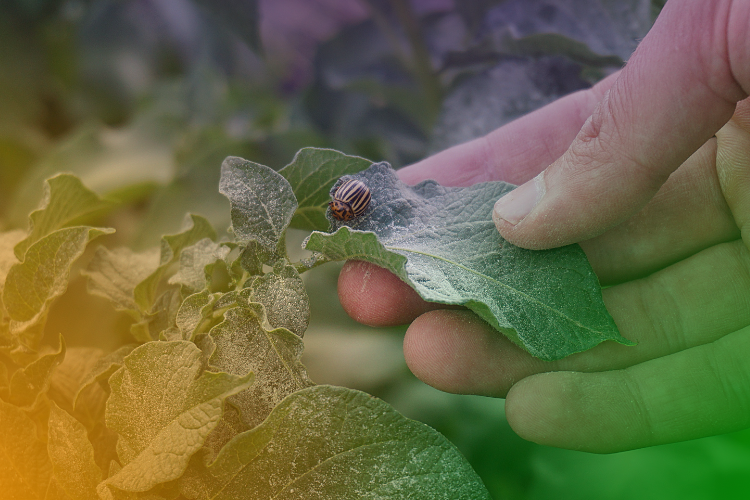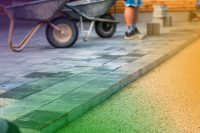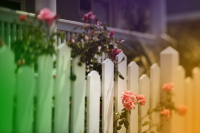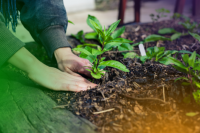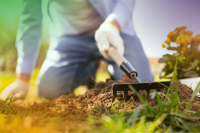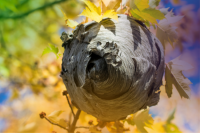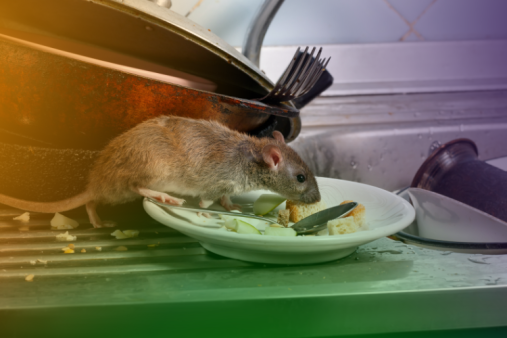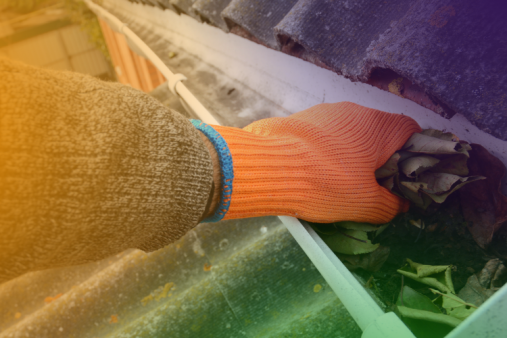There are a number of ways to get rid of garden pests without resorting to harmful chemicals. Here are some tips:
-
Hand-picking: Inspect your plants regularly and remove any pests you find by hand. Wear gloves and use a bucket of soapy water to dispose of them.
-
Natural predators: Introduce natural predators like ladybugs, lacewings, and praying mantis to your garden. They feed on a variety of pests and can help keep their populations in check.
-
Companion planting: Plant certain herbs and flowers that repel pests, such as marigolds, lavender, and garlic. This can help prevent infestations
-
Neem oil: Neem oil is a natural insecticide derived from the neem tree. It is safe for humans and pets and can be effective in controlling a range of pests.
-
Soap and water: A simple mixture of water and soap can be sprayed on plants to control aphids, mites, and other soft-bodied insects. Be sure to use mild, natural soap and test on a small area of your plants first.
-
Diatomaceous earth: Diatomaceous earth is a powder made from the fossilized remains of tiny marine organisms. It can be sprinkled on plants and soil to control pests like slugs, snails, and beetles.
Remember to always read labels and follow instructions carefully when using any pest control products, and avoid using harmful chemicals whenever possible.
More on hand picking to remove pests from your garden
Hand picking garden pests can be an effective way to control infestations without using harmful chemicals. Here are some steps to follow for hand picking:
-
Identify the pests: Before you start hand picking, make sure you know what you're looking for. Check your plants regularly and keep an eye out for any signs of damage or infestation.
-
Choose the right time: The best time to hand pick pests is in the morning or evening when they are less active. Avoid picking in the heat of the day when insects are most active.
-
Wear gloves: Wear gloves to protect your hands from sharp thorns and prickly hairs on some plants. Gloves can also protect your skin from harmful insecticides that may have been used on neighboring plants.
-
Inspect each plant: Carefully inspect each plant and look for pests. Pay particular attention to the undersides of leaves and along stems where pests may be hiding.
-
Remove pests: Gently pick off the pests and drop them into a bucket of soapy water or onto a sheet of paper that can be disposed of later. Be sure to dispose of the pests away from your garden.
-
Monitor your plants: Continue to monitor your plants regularly for signs of pests and repeat the hand picking process as needed.
Hand picking is a labor-intensive method, but it can be effective in controlling pests, especially when combined with other pest control methods such as companion planting and natural predators.
More on companion planting to repel pests and help the environment
Companion planting is a gardening technique in which different plants are grown in close proximity to one another for their mutual benefit. The idea is that certain plants can help each other by repelling pests, providing shade, and improving soil health.
For example, planting marigolds near tomato plants can help repel harmful insects like whiteflies and nematodes, while planting herbs like basil and parsley near tomatoes can improve their flavor and growth.
Companion planting can also be used to create a more diverse and balanced ecosystem in the garden. For instance, planting nitrogen-fixing legumes like beans and peas can improve soil health and fertility for other plants, while attracting pollinators like bees and butterflies can increase fruit and vegetable yields.
However, not all plant combinations are beneficial. Some plants can compete for nutrients and space, or even attract pests to each other. It's important to research which plants make good companions before planting them together.
More on natural predators to deal with garden pest control
Here are some examples of natural garden predators that can help repel pests:
-
Ladybugs: Ladybugs are known to feed on aphids, mealybugs, and scale insects, making them a useful natural predator in the garden.
-
Lacewings: Lacewing larvae feed on a range of pests including aphids, mites, and caterpillars.
-
Praying mantis: Praying mantises are known to eat a variety of insects including grasshoppers, crickets, and flies.
-
Birds: Many birds, including chickadees, wrens, and bluebirds, feed on insects like caterpillars, beetles, and aphids.
-
Frogs and toads: These amphibians feed on a range of insects, including slugs and snails.
-
Nematodes: Nematodes are microscopic worms that can be added to soil to control pests like grubs and beetles.
-
Beneficial nematodes: These nematodes are parasitic and feed on pest insects like fleas, ticks, and weevils.
It's important to note that not all natural predators are effective against all types of pests, and introducing them to your garden can have unintended consequences. Be sure to research which predators are best suited to the pests in your garden and how to properly introduce them.
More on Neem Oil and using Neem Oil as an insecticide solution
Neem oil is a natural plant-based oil that is extracted from the seeds of the neem tree, which is native to India and other parts of Southeast Asia. It has been used for centuries in traditional medicine and as a natural pesticide.
Neem oil contains a range of active compounds including azadirachtin, which is known to have insecticidal properties. It is effective against a wide range of pests including aphids, whiteflies, and spider mites, and can also help control fungal diseases like powdery mildew.
Neem oil is available in various forms including sprays, concentrates, and ready-to-use formulations. It is often used in organic gardening and is considered a safer alternative to synthetic pesticides as it is non-toxic to humans and most beneficial insects when used as directed.
Neem oil is also used in cosmetic and personal care products due to its anti-inflammatory, anti-bacterial, and anti-fungal properties. It is often used in skin care products to help treat acne, eczema, and psoriasis, and in hair care products to promote healthy hair and scalp.
How to use Neem Oil on garden pests (step by step)
To use neem oil to remove insects from your garden, follow these steps:
-
Dilute the neem oil: Mix neem oil with water according to the manufacturer's instructions. Generally, neem oil is mixed at a ratio of 1-2 tablespoons of oil per gallon of water.
-
Fill a sprayer: Pour the diluted neem oil mixture into a sprayer.
-
Spray the plants: Thoroughly spray the plants in your garden, paying particular attention to the undersides of leaves and other areas where insects tend to hide.
-
Repeat the process: Repeat the neem oil application once a week or as needed until the insect infestation is under control.
Neem oil works by disrupting the life cycle of insects, preventing them from feeding and laying eggs. It is effective against a wide range of pests including aphids, whiteflies, and spider mites. Neem oil is also effective against fungal diseases like powdery mildew.
When using neem oil, it's important to follow the manufacturer's instructions and to avoid spraying during the heat of the day, as this can cause the oil to evaporate too quickly. Neem oil should also not be used on plants that are drought-stressed or on plants that are about to flower or produce fruit.
More on using soap and water to deal with garden pests
Using soap and water is an effective, natural, and non-toxic method to get rid of garden pests. Here's how to use soap and water to remove pests from your garden:
-
Mix the solution: Mix one to two tablespoons of liquid soap or insecticidal soap with one gallon of water in a spray bottle or garden sprayer.
-
Identify the pest: Identify the pest that you want to remove. Soap and water is effective against a range of pests including aphids, spider mites, and whiteflies.
-
Spray the plants: Spray the soap and water solution on the affected plants, paying particular attention to the undersides of leaves and other areas where the pests tend to hide.
-
Repeat the process: Reapply the soap and water solution once a week or as needed until the pest infestation is under control.
Soap and water works by coating the pests with a thin film of soap which disrupts their respiratory system and causes them to suffocate. It is safe for most plants and beneficial insects when used as directed.
When using soap and water, it's important to use liquid soap or insecticidal soap and avoid using dish soap or other household cleaners, as these may contain harsh chemicals that can harm your plants. Also, avoid spraying during the heat of the day, as this can cause the solution to evaporate too quickly.
More on diatomaceous earth as an insecticide and pesticide
Diatomaceous earth is a naturally occurring sedimentary rock that is made up of the fossilized remains of tiny aquatic organisms called diatoms. It is a soft, powdery substance that is composed of silica, calcium, and other trace minerals.
Diatomaceous earth is often used as a natural insecticide and pesticide. When insects come into contact with the powder, the sharp edges of the microscopic diatom particles cut through their exoskeletons, causing them to dehydrate and die. It is effective against a wide range of pests including ants, bed bugs, fleas, and cockroaches.
In addition to its use as an insecticide, diatomaceous earth is also used in a variety of other applications such as water filtration, toothpaste, and as a dietary supplement for humans and animals. It is available in both food-grade and non-food-grade forms, so it's important to use the appropriate type for your intended use.
